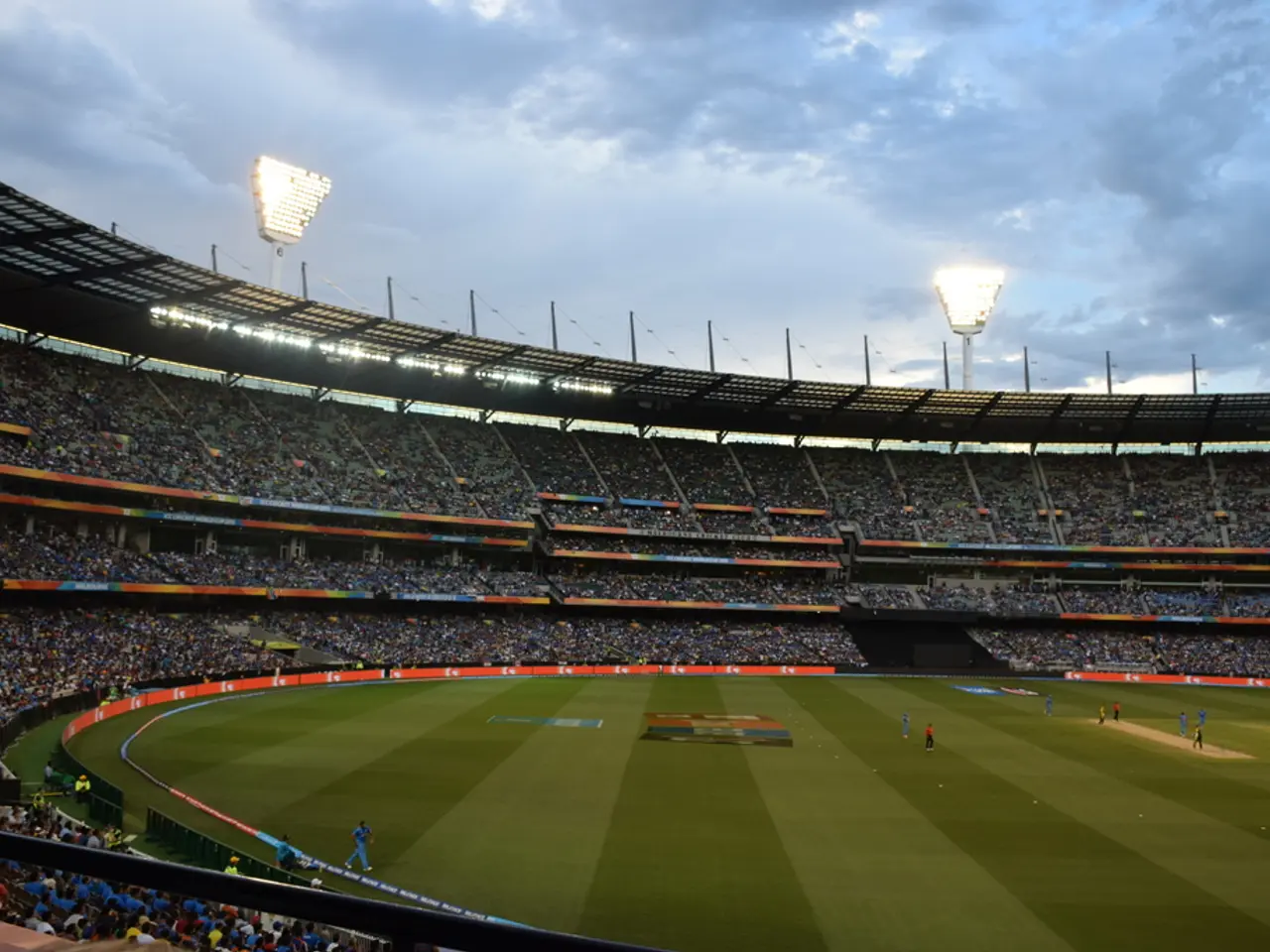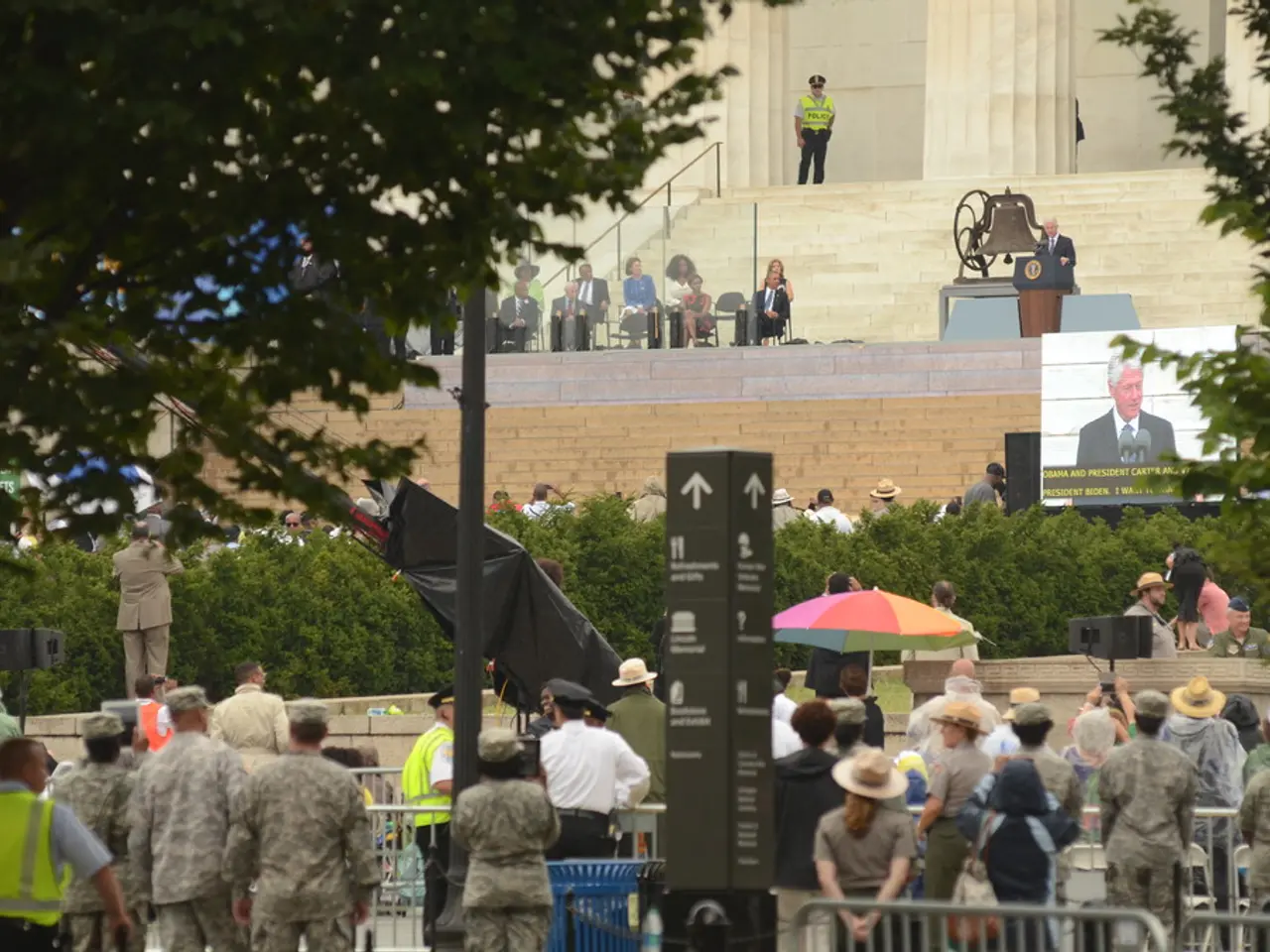Aurora Borealis Possibility Tonight: 16 States Could Witness Northern Lights and Meteor Shower following Solar Awakening
The night skies over the northern and central United States could be a spectacle this weekend, with the possibility of the aurora borealis, or Northern Lights, making an appearance. According to recent forecasts, a moderate-strength geomagnetic storm is expected to hit Earth on August 8 and 9, courtesy of a coronal mass ejection (CME) from the Sun that erupted on August 5.
The CME is set to interact with Earth's magnetosphere, generating disturbances that expand the auroral oval southward, potentially making auroras visible from about 18 states across the northern U.S. During this period, parts of Washington, northern Oregon, Idaho, Montana, Nebraska, Wyoming, North Dakota, South Dakota, Minnesota, northern Iowa, Wisconsin, Michigan, New York, Vermont, New Hampshire, and Maine could potentially witness this natural light show.
NOAA's Space Weather Prediction Center has predicted a G2 (moderate) storm on their five-tier scale, indicating that effects on technology are expected to be manageable but sufficient to produce auroras visible farther south than usual. The exact timing depends on when the CME arrives, with impacts possibly occurring during the daylight hours of August 8 and continuing into the night of August 8–9.
In addition to the Northern Lights, the Perseid meteor shower is also building to a peak early next week. "Shooting stars" from this meteor shower could be seen during the same time, adding an extra dash of magic to the night sky. The Perseid meteor shower will peak on August 12-13, but only a handful of the brightest meteors will likely be visible this year.
If the current solar cycle has a long tail, aurora sightings in the U.S. could remain possible for a few more years. The sun is thought to be on the wane, having peaked in late 2024, but the finest aurora displays often occur in the few years after solar maximum or during a double peak.
To keep up with real-time predictions of aurora visibility, NOAA's Aurora Dashboard is a valuable resource. The sturgeon moon will turn full on August 9 and will be very bright on August 8 and throughout the weekend, offering a beautiful backdrop for any potential aurora displays.
Stay tuned for updates as we approach this exciting celestial event!
- The prediction of a G2 (moderate) geomagnetic storm by NOAA's Space Weather Prediction Center suggests that the aurora borealis, or Northern Lights, could be visible in parts of the northern United States tonight and tomorrow, making this weekend an optimal time for watching for this natural light show.
- In the realm of science, environmental-science, weather, space-and-astronomy, and meteorology, NOAA's Aurora Dashboard serves as a crucial tool to keep up with real-time predictions of aurora visibility, offering valuable insights to those eager to catch a glimpse of the enchanting Northern Lights, especially during a solar maximum or in the few years following.








